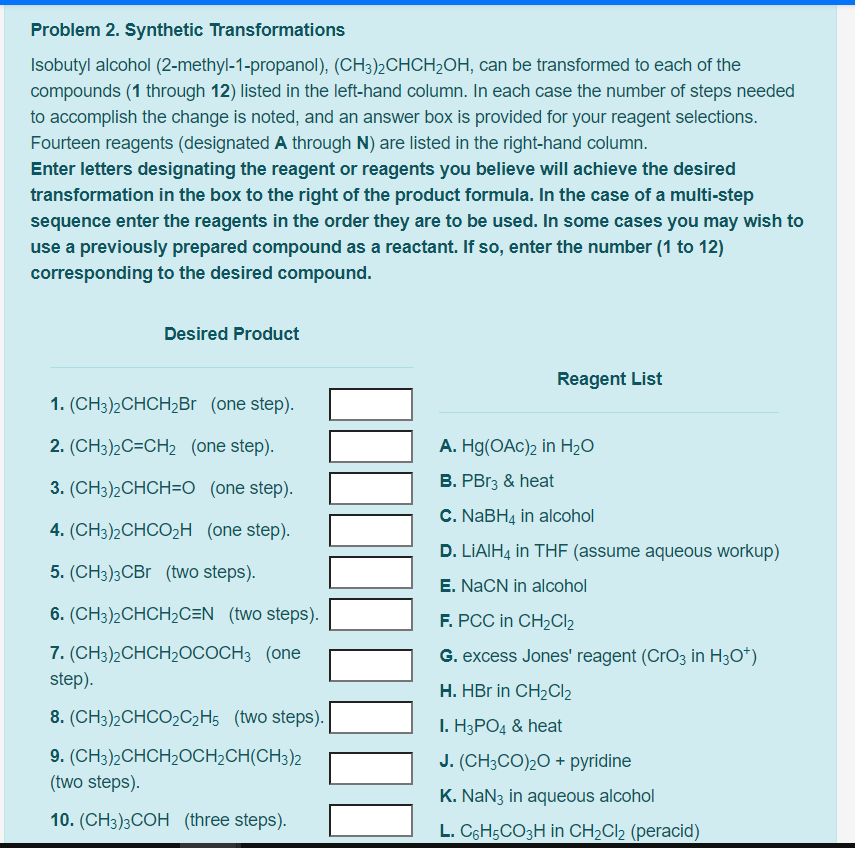Problem 2. Synthetic Transformations Isobutyl alcohol (2-methyl-1-propanol), (CH3)2CHCH2OH, can be transformed to each of the compounds (1 through 12) listed in the left-hand column. In each case the number of steps needed to accomplish the change is noted, and an answer box is provided for your reagent selections. Fourteen reagents (designated A through N) are listed in the right-hand column. Enter letters designating the reagent or reagents you believe will achieve the desired transformation in the box to the right of the product formula. In the case of a multi-step sequence enter the reagents in the order they are to be used. In some cases you may wish to use a previously prepared compound as a reactant. If so, enter the number (1 to 12) corresponding to the desired compound. Desired Product Reagent List 1. (CH3)2CHCH2B (one step). 2. (CH3)2C=CH2 (one step). A. Hg(OAc)2 in H2O 3. (CH3)2CHCH=O (one step). B. PBR3 & heat C. NABH4 in alcohol 4. (CHз)2СHCO2н (one step). D. LIAIH4 in THF (assume aqueous workup) 5. (CH3)3CBr (two steps). E. NaCN in alcohol 6. (CH3)2CHCH2C=N (two steps). F. PCC in CH2CI2 7. (CH3)2CHCH2OCOCH3 (one step). G. excess Jones' reagent (CrO3 in H3O*) H. HBr in CH2CI2 8. (CH3)2CHCO2C2H5 (two steps). I. H3PO4 & heat 9. (CH3)2CHCH2OCH2CH(CH3)2 J. (CH3CO)2O + pyridine (two steps). K. NaN3 in aqueous alcohol 10. (СHэ)3СОН (three steps). L. C6H5CO3H in CH2CI2 (peracid)
Problem 2. Synthetic Transformations
Isobutyl alcohol (2-methyl-1-propanol), (CH3)2CHCH2OH, can be transformed to each of the compounds (1 through 12) listed in the left-hand column. In each case the number of steps needed to accomplish the change is noted, and an answer box is provided for your reagent selections. Fourteen reagents (designated A through N) are listed in the right-hand column.
Enter letters designating the reagent or reagents you believe will achieve the desired transformation in the box to the right of the product formula. In the case of a multi-step sequence enter the reagents in the order they are to be used. In some cases you may wish to use a previously prepared compound as a reactant. If so, enter the number (1 to 12) corresponding to the desired compound

Trending now
This is a popular solution!
Step by step
Solved in 4 steps with 4 images




